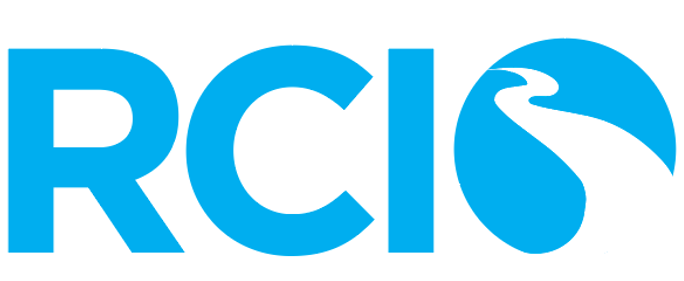Publisher
University of Tennessee at Chattanooga
Place of Publication
Chattanooga (Tenn.)
Abstract
Hudson Rouben The Ripples of Gratitude Internship/practicum overview submission Burnout is one of the most common and devastating phenomena that can occur within the workplace. Considering the government's radical funding changes, organizations have been struggling nationwide, especially nonprofit organizations. This struggle arose from executive orders from federal legislation which affected nonprofit's ability to seek fundraising and federal grants. This change led to high levels of burnout and anxiety among many nonprofits (New Tax Law, 2025; Barber, 2025). A Survey even found that up to 90% of nonprofit leaders are concerned about their own levels of burnout (State of Nonprofits, 2025). As part of a community-engaged course, I worked with Kentucky nonprofit organizations and created an initiative to tackle burnout. My research was centered on Maslach and Leiter's, The Burnout Challenge (2022). Maslach and Leiter identify the cause of burnout as “due to misalignments across six critical workplace dimensions: workload, control, reward, community, fairness, and values” (Maslach & Leiter, 2022, p. 6). After administering group interviews with nonprofit leaders and staff, I recorded comprehensive notes, observations, and themes on burnout. What emerged was a common misalignment between reward, community, and workload. The limited recognition and support along with the limited staffing creates a tense, overwhelming melting pot for burnout in nonprofits. I developed the Ripples of Gratitude initiative to synthesize a culture that recognizes what often goes unnoticed. Recognition is a basic human need for self-realization (Honneth, 1995). Individuals being recognized for efforts and contributions thrive much farther compared to when recognition is absent. The acknowledgement of attitude, skills, and effort is not a “perk” but a fundamental psychological need. The lack of recognition aligns with reward as one of six mismatches from Maslach and Leiter's Burnout Challenge. When employees go unnoticed, ignored, and undervalued, burnout increases. The Ripples of Gratitude was created to target the mismatch in worker recognition by building a culture of gratitude, involvement, and purpose by fostering a cordial ground for optimism, curiosity, resilience, and creativity. The Ripples of Gratitude involve coworkers and leaders signing “gratuity slips.” Coworkers and leaders are highly encouraged to highlight unseen contributions, proclaim emotional and relational support, or highlight the optimistic attitude towards the organization's mission. These slips are either hand delivered or placed within a designated drop box location. After receiving a slip, you are highly encouraged to write one about a separate coworker (hence: the ripple!). By adding a quick, structured, low-pressure practice, this initiative creates opportunities for reflection, gratitude and acknowledgment that directly counteract invisibility and disengagement within the workplace. Overall, the Ripples of Gratitude initiative seeks to build a self-sustaining culture centered around appreciation and individual well-being that strengthens organizational cohesion as well as reinforcing the organizations shared mission. It is now freely available for use as part of the Kentucky Psychological Foundation’s Nonprofit Wellness Initiative.
Subject
Industrial and organizational psychology
Document Type
posters
Language
English
Rights
http://rightsstatements.org/vocab/InC/1.0/
License
http://creativecommons.org/licenses/by/4.0/
Included in
Ripples of Gratitude
Hudson Rouben The Ripples of Gratitude Internship/practicum overview submission Burnout is one of the most common and devastating phenomena that can occur within the workplace. Considering the government's radical funding changes, organizations have been struggling nationwide, especially nonprofit organizations. This struggle arose from executive orders from federal legislation which affected nonprofit's ability to seek fundraising and federal grants. This change led to high levels of burnout and anxiety among many nonprofits (New Tax Law, 2025; Barber, 2025). A Survey even found that up to 90% of nonprofit leaders are concerned about their own levels of burnout (State of Nonprofits, 2025). As part of a community-engaged course, I worked with Kentucky nonprofit organizations and created an initiative to tackle burnout. My research was centered on Maslach and Leiter's, The Burnout Challenge (2022). Maslach and Leiter identify the cause of burnout as “due to misalignments across six critical workplace dimensions: workload, control, reward, community, fairness, and values” (Maslach & Leiter, 2022, p. 6). After administering group interviews with nonprofit leaders and staff, I recorded comprehensive notes, observations, and themes on burnout. What emerged was a common misalignment between reward, community, and workload. The limited recognition and support along with the limited staffing creates a tense, overwhelming melting pot for burnout in nonprofits. I developed the Ripples of Gratitude initiative to synthesize a culture that recognizes what often goes unnoticed. Recognition is a basic human need for self-realization (Honneth, 1995). Individuals being recognized for efforts and contributions thrive much farther compared to when recognition is absent. The acknowledgement of attitude, skills, and effort is not a “perk” but a fundamental psychological need. The lack of recognition aligns with reward as one of six mismatches from Maslach and Leiter's Burnout Challenge. When employees go unnoticed, ignored, and undervalued, burnout increases. The Ripples of Gratitude was created to target the mismatch in worker recognition by building a culture of gratitude, involvement, and purpose by fostering a cordial ground for optimism, curiosity, resilience, and creativity. The Ripples of Gratitude involve coworkers and leaders signing “gratuity slips.” Coworkers and leaders are highly encouraged to highlight unseen contributions, proclaim emotional and relational support, or highlight the optimistic attitude towards the organization's mission. These slips are either hand delivered or placed within a designated drop box location. After receiving a slip, you are highly encouraged to write one about a separate coworker (hence: the ripple!). By adding a quick, structured, low-pressure practice, this initiative creates opportunities for reflection, gratitude and acknowledgment that directly counteract invisibility and disengagement within the workplace. Overall, the Ripples of Gratitude initiative seeks to build a self-sustaining culture centered around appreciation and individual well-being that strengthens organizational cohesion as well as reinforcing the organizations shared mission. It is now freely available for use as part of the Kentucky Psychological Foundation’s Nonprofit Wellness Initiative.

Department
University of Tennessee at Chattanooga. Dept. of Psychology